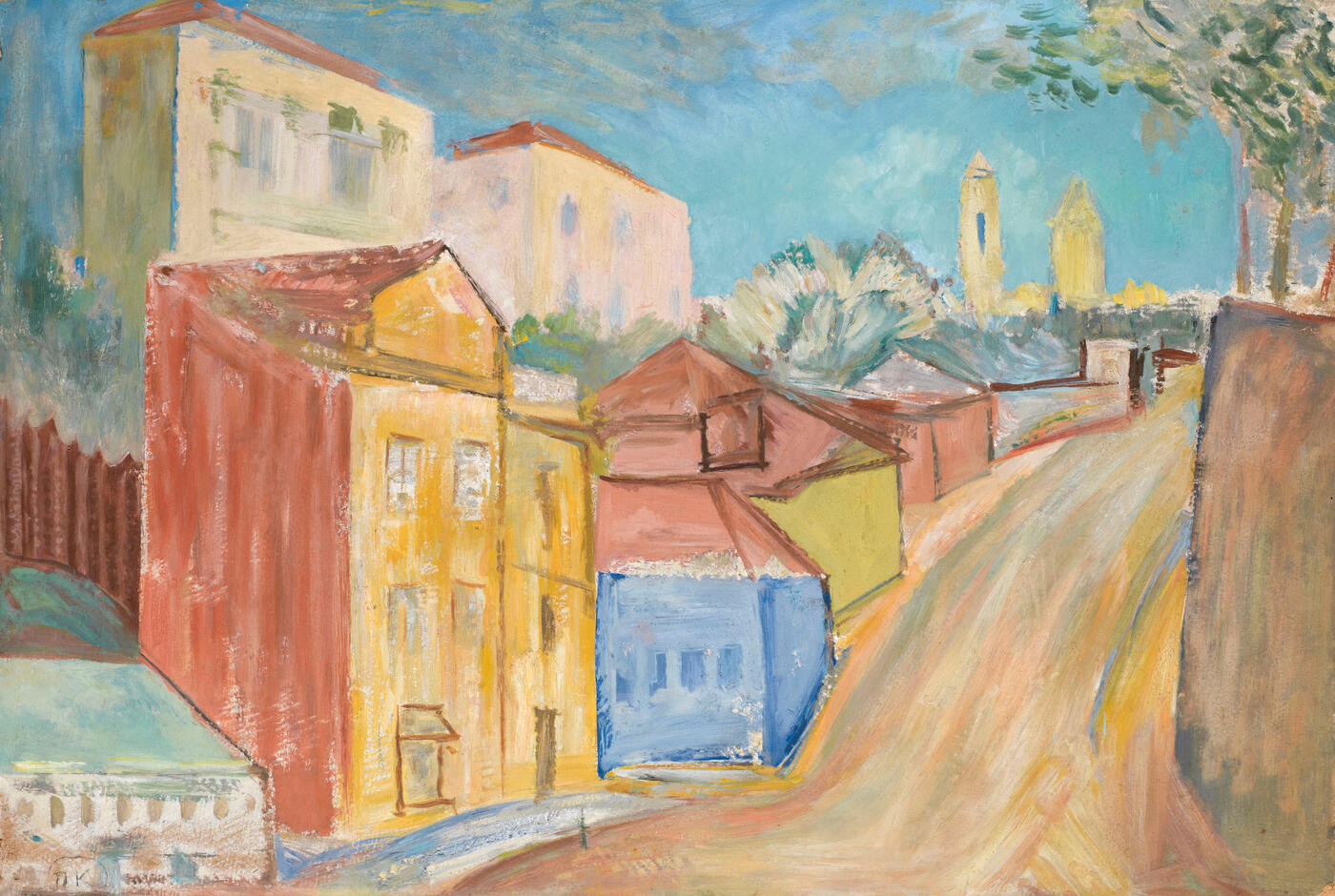3 June 2015 Russian Art Auctions
3 June 2015

* 7. KUZNETSOV, PAVEL (1878-1968)
Old Moscow, inscribed with the artist's initials by E. Bebutova, the artist's wife.
Oil on cardboard, 51 by 74.5 cm.
160,000-200,000 GBP
Executed in mid-1920s.
Provenance: Estate of the artist.
Acquired from the above by the renowned Soviet composer and pianist Arno Babajanian in 1968.
Thence by descent.
Acquired from Ara Babajanian by the present owner.
Private collection, Europe.
The work is accompanied by a letter from Ara Babajanian, the son of Arno Babajanian, confirming the provenance of the work.
Authenticity certificate from the expert T. Zelyukina.
Authenticity certificate from the expert I. Geraschenko.
Literature: L. Budkova, D. Sarabianov, Pavel Kuznetsov, Moscow, Sovetskii khudozhnik, 1975, pl. 84, illustrated; No. 449, listed.
M. Kiselev, Peizazh sovetskikh khudozhnikov 1917–1974, Moscow, Sovetskii khudozhnik, 1975, illustrated on the cover; pp. 52, 53, illustrated and listed.
D. Sarabianov (ed.), Pavel Kuznetsov. Izbrannye proizvedeniya, Moscow, Sovetskii khudozhnik, 1988, No. 90, illustrated and listed.
There is a palpable sense in Old Moscow, which Pavel Kuznetsov painted soon after his return from Paris, of the artist’s infatuation with French painting: the greenery blanching in the heat and bright sunlight, the little white, blue and yellow houses with their pink roofs, the luminous pale blue of the sky, pierced in the distance by the silhouette of a church and bell tower and the lively shifting structural colour of the road receding into the distance – all these features awaken recollections of Paul Cézanne’s views of Aixen-Provence and L’Estaque, of Kuznetsov’s conversations with André Derain and of that whole round of Parisian impressions and meetings which inspired the artist to create several urban landscapes “of the new type” in the mid-1920s.
In these landscapes, Kuznetsov returns, as it were anew, to the fresh en plein air painting, with which he had started – to his Courtyard in Saratov or the works he created in the studio of Valentin Serov and Konstantin Korovin. This return to en plein air, however, is linked to a new stage in the development of his own painting system, when his earlier principles of decorativeness and elegance of texture are enriched by deeply-weighed considerations of the rhythmic structure in a composition.
In this highly decorative landscape, Kuznetsov draws all the spatial planes together into a single pictorial field, emphasising its integrity by precisely handled correlations of colour. The bright white ground shows through the verdure, the sky, the walls and roofs of the houses, everything in fact becomes ethereal, infused with streaming light. The world without shade that emerges is full of radiant colour, which it has absorbed from the sunlight.
The measured rhythm of the town buildings rising towards the sky and the bushes cushioning them, painted sometimes with a dry brush or by contrast with a soft brush saturated with paint, the vertical lines of the church and the fluent brushstrokes of the foliage that seems suspended over the road, lend the work a combination of painterly and graphic qualities that are particularly effective.
The painting comes from the distinguished collection of Arno Babajanian, where it arrived straight from the artist’s studio. It bears an inscription, executed in 1968 by Kuznetsov’s widow Elena Bebutova, confirming the authenticity of the work.
Notes on symbols:
* Indicates 5% Import Duty Charge applies.
Ω Indicates 20% Import Duty Charge applies.
§ Indicates Artist's Resale Right applies.
† Indicates Standard VAT scheme applies, and the rate of 20% VAT will be charged on both hammer price and premium.